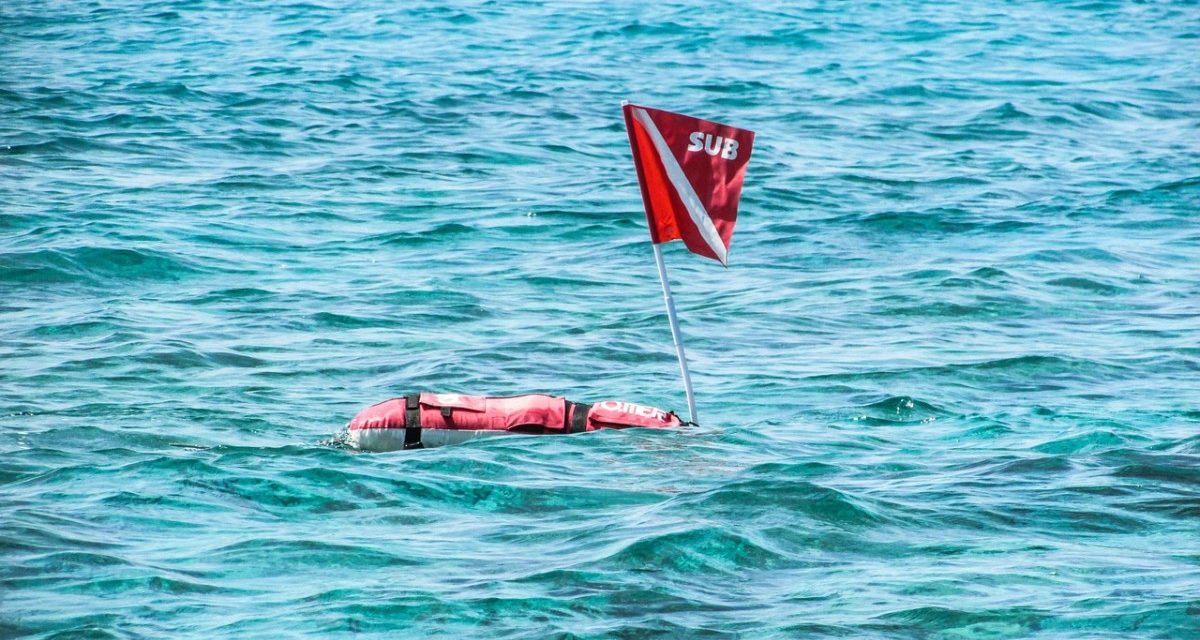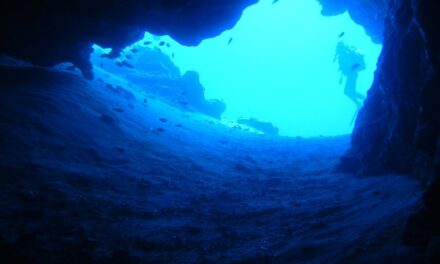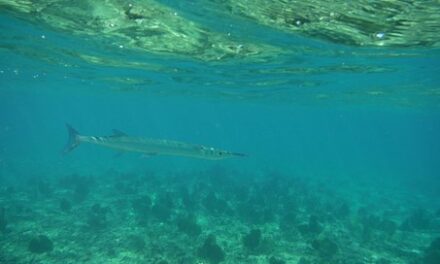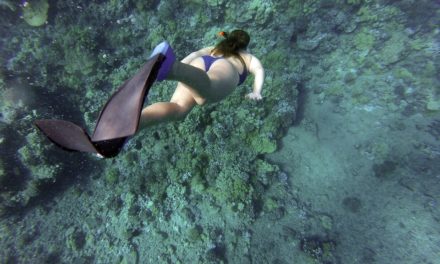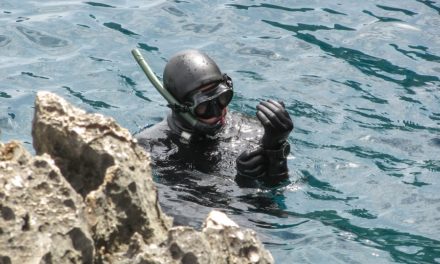Are you interested in learning how to choose the best spearfishing float and then knowing which top floats work best for your specified use? If so, read on to learn how.
Although ancient, the art of spearfishing is still a very popular way of catching fish, and for good reasons. For one, it offers the most selective catch not only by species but also by size and quantity. This means it has no by-catch, making it one of the most sustainable fishing techniques.
Spearfishing also doesn’t require bait and it causes no harm to the environment. Plus, it offers tons of fun!
But before you head out to the ocean to get yourself fresh, nutritious fish for dinner, you’ll need to invest in some essential gear. More specifically, you should look for the best spearfishing float. I’ll get into the “whys for getting this float” in a sec. But first, let’s take a look at some top-rated spearfishing floats on the market.
Best Spearfishing Floats Reviewed:
Scuba Choice Palantic Diving Spearfishing Float
The Palantic spearfishing float is an excellent choice for beginners. It strikes the perfect balance between pricing and features, making it a good float for testing your waters in this area.
This is not to mean that it’s not durable. On the contrary, Palantic is a highly-durable float constructed from 4200D nylon. The nylon is superior to typical PVC material.
This float is also torpedo shaped, making it easy to navigate in water. It measures 16” by 8” and comes with a brightly-colored red and white dive flag. The bright orange color of the float and those of the flag, increase your visibility in the waters.
Pros
● Affordable
● Has a torpedo shape to minimize friction in water
● Comes in a bright orange color to increase visibility
Cons
● The line gets tangled rather easily
Sopras Sub Torpedo Float
If you’re looking for a float that can hold a ton of gear when you go spearfishing, the Sopras Sub Torpedo Float is your best bet.
Coming in with a length of 32 inches, the float has 7 D-ring attachment points allowing you to hook a ton of equipment. It has a durable outer cover that won’t give in to the weight of your spearfishing tools.
As the name suggests, this float is also shaped like a torpedo. This streamlined shape helps to reduce friction in water; hence, enable it to move more smoothly.
And apart from the float, you also get a red flag with a white stripe and a 50-foot nylon line. The flag measures 7.24” by 7.25”.
The float line is what you use to attach your speargun to the float. Once you drop your speargun underwater, you can recover it more easily using the float line.
Pros
● Fitted with 7 d-rings to allow attachment of fish stringer and other tools
● Also has a torpedo shape to enhance navigation
● Comes with a 50-foot line to ease retrieval of a speargun
Cons
● The flag is rather small although it can easily be replaced
Omer Atoll Float
The Atoll Float might not be the cheapest of the bunch, but it’s certainly worth the investment.
The outer sleeve is made of 420D nylon, enhancing its durability. The float also has two inner chambers, both of which are constructed from tear-resistant PVC material.
But what makes Atoll float really stand out is its color scheme. The top is a vibrant red color to alert boat traffic of your presence. The high and stable flagpole and flag also enhance your visibility.
On the other hand, the bottom is colored white, which helps to reduce your float’s visibility to the fish below. This makes your presence less obvious, and subsequently, boosts your chance of catching fish.
Another outstanding feature of this float entails the seven Velcro straps on its underside. Thanks to these straps, you can attach up to three spare spearguns then use the remaining 4 plastic hooks for quick line attachments.
Pros
● Unique color scheme which enhances spearfishing while also increasing user’s visibility
● Has 7 straps for multiple attachments
● The outer sleeve is nylon-made for durability
Cons
● Pricier than other floats
Palantic Scuba Diving Gangway Float Boat
If you’re daring enough to spearfish by the shore without a boat, then this spearfishing float is a great choice. Ideally, the Gangway is a small-sized, inflatable boat that can be used in place of a float.
When we started pushing the float out to an offshore reef, it moved swiftly without a hitch.
Another perk of this float is that it gives you ample space to work with. You can put all your catch inside the float. And if you need a breather, it’s floaty and stable enough that you can hang onto it yourself.
When fully inflated, the float measures 35” by 24” by 11”. The dive flag measures 10” by 8” while the pole length is 19-3/4″. With such a long pole, you’ll be visible to boat traffic from miles away.
Better yet, the float comes with its own air pump making it easy to inflate and take it for spearfishing anytime you want.
Pros
● Has a solid build
● Has enough room to put your catch
● Includes an air pump for easy inflation
Cons
● The dive flag and pole are made of cheap material
Marlin Dive Spearfishing Buoy Float
Looking for a spearfishing float that has all the bells and whistles? The Marlin Buoy Float fits that description perfectly.
This float is a two-layer structure. The outer layer constructed from nylon to protect the float from cuts. The inner layer is made from PVC, which is also resistant to tears.
The beauty about Marlin Dive spearfishing float is that it’s strong enough to hold your arsenal of spearfishing tools. Be it spearguns, harpoons or tips, this float will withstand anything you throw at it. To enhance this durability, the float is additionally stitched with a 3-cm wide strap.
Furthermore, the float comes in a beautiful orange color and has a small flag to alert other boats of your presence. Also included in the kit is a buoy line, which comes in handy when you want to retrieve a speargun or other fishing equipment.
Pros
● Lightweight design for easy portability
● Comes with d-rings and carabiners to attach additional equipment
Cons
● The dive flag can be made in a bigger size
Why You Need the Best Spearfishing Float:
The primary benefit of using a spearfishing float and flag is safety. More often than not, the float is bigger than the user. This size coupled with its bright color increases your visibility to either a spotter or other boat traffic in your vicinity.
Whenever an oncoming boatie sees your diving float, they’ll either choose another route or reduce their speed to 5 knots within a 200-meter radius. Even if they don’t decrease speed, they’ll be on the lookout for divers. Thus, diving floats prevent collisions, which could lead to fatal injuries.
Another reason why you should never go spearfishing without a float is that it makes it easier to track you. If you’ve ever gone scuba diving, then you know that one of the scariest things is to surface and find yourself lost at sea. As distressing as this sounds, it actually happens.
Fortunately, if you have a diving float, it will be much easier for other divers or fishermen to track your whereabouts. Without this float, tracking you would be like looking for a needle in a haystack.
Lastly, a spearfishing float doubles up as a storage unit for your fishing gear. Nowadays, most of these floats are made of heavy-duty nylon material, making them strong enough to hold a significant amount of weight.
In fact, all the spearfishing floats in our review have D-ring attachment points where you can hook your spearguns and other tools. Plus, you can also use your float to transport your catch.
Things to Look For When Choosing a Spearfishing Float:
Type of Spearfishing Float
When looking at the different types of spearfishing floats, it can be difficult to know what to go for.
As with most things, there’s no one-size-fits-all situation. It’s merely a case of determining your budget and needs, then matching them to the models available. These are the main types of spearfishing floats:
Spearfishing hard float
If your main concern is durability, then a hard float is the best model to choose.
Why?
Because they are hard-wearing watercraft, and the buoyancy they provide is superb! Ideally, these floats can be used in any condition and for any water-related activity. They can take a beating and still perform effectively.
Obviously, you still need to consider the types of fish you plan to catch. The larger and stronger the fish, the bigger your spearfishing hard float should be.
The only disadvantage of hard floats is that they’re bulky. So if you don’t have the physical strength to haul them from the shore and into the water, you might not like them.
On the brighter side, spearfishing hard floats come with fillable tubes, which allow users to fill the floats with foam. However, this is not mandatory.
Inflatable spearfishing float
If you don’t like the heavy weight of a hard float, you’ll want to go for the inflatable model as it’s much lighter.
Their lightweight designs make it convenient to carry and haul. Plus, they are compact and easy to set up. A majority of them come with air pumps to make it easy to inflate them.
Although some spearos prefer inflatable to hard floats, I’d recommend hard floats because of their tough build.
Regardless, if you’re on a shoestring budget and simply want to keep yourself safe when spearfishing, you can forego the pricier hard float. Whether you’re buying it for convenience or because of your budget, an inflatable spearfishing float is better than no float.
Spearfishing float board
For the DIY enthusiast, you’ll probably love the idea of making your own spearfishing float from scratch.
The main items you need are a boogie board, a dive flag, and string line. Attach the line to your boogie board, then incorporate the dive flag at the top and you have yourself a functional dive float! For more detailed steps, watch this video that provides a step-by-step guide to make a DIY dive float.
How Much Time and Effort Is Required?
This has to do with setting up your float. If you don’t want to spend a couple of minutes inflating a float so you can use it, then perhaps a foam-filled model is a better option.
Some floats don’t come with air-pumps, meaning you have to spend a good chunk of time pumping air from your lungs to inflate it. Apart from consuming your time, this process can also be pretty damn tiring.
How Much Weight Can it Hold?
You also have to think about your spearfishing gear. If you’d like a float that can accommodate them, then account for this when buying one.
Does the float have D-ring attachments for hooking up extra tools? Can it support the weight of your catch back to shore without caving under pressure?
How to Use a Spearfishing Float:
Shore Entries and Exits
Once your float is ready to use, the only thing left is to haul it into the water. But to make the most out of your float, there are a few things you should pay attention to when entering and exiting the shore.
When entering calm water, you should hold the reel in one hand and let out at least 5 feet of the line. Next, pull your spearfishing float from behind you.
Entries through surf call for additional finesse, especially when you’re towing the float. You should NEVER push the float in front of you because if there are strong waves, they will push it back in your direction and this could result in injuries or entanglement.
If you prefer to enter the water by ducking through the tide, ensure you let out enough line. This will enable the float to ride easily over the top. To prevent accidents, avoid fastening the towing line to your gear or wrapping it around your hand too tightly.
When you get to calmer water, you should prepare to descend or continue swimming until you reach your spearfishing spot.
When exiting, you should do the opposite of what you did during entry. That is, push the float so that it’s in front of you. This way, the float won’t get between you and the water movement.
In the event that there’s a strong wave pulling the spearfishing float towards the shore, do not try and maintain control. It’s better to let it go than hang on because ultimately, it will wash ashore where you can pull it from.
Diver Freedom System
If you have a fishing buddy, you should consider the diver freedom system. Developed by at Cape Jaffa a few years ago, this technique allows two divers to have some level of diving freedom while maintaining a safe distance from each other.
For this approach, you’ll need at least 20-meters of line, with a red surface buoy at one end and a reef anchor on the other end. You will also need a one-meter line, which should have a white float attached. The 1m float line is then attached to two 12-meter lines that extend to the reef anchors held by the divers.
With such a setup, two divers can dive from the mainline but spearfish around different areas of a reef. Therefore, they are able to work independently of each other, but still keep close contact.
Ascending
It’s vital for spearos to keep reeling in excess line as they swim towards the surface. This prevents the line from getting tangled on the spearfishing gear.
Another important thing you should do when ascending is to scan the surface. Yes, the float and flag are meant to notify other boats that you’re in the area.
But there’s always a chance of running into drivers of boats and PWCs who have no idea what the float and flag mean. Some of them might actually approach your location to get a better look of the float.
This means that you should always inspect the area as you ascend. Try rotating in a slow, full circle as you check for watercraft. You should also listen keenly for the sound of a motor. If you do detect an oncoming boat, remain below the safety stop depth until the vessel leaves.
Key Takeaway:
Floats are one of the most important pieces of gear for spearfishing. Floats help to signal your presence in water to jet skis and other watercraft. To put it mildly, in a collision between your head and a boat’s propeller, the prop is bound to win so you better invest in a spearfishing float!

